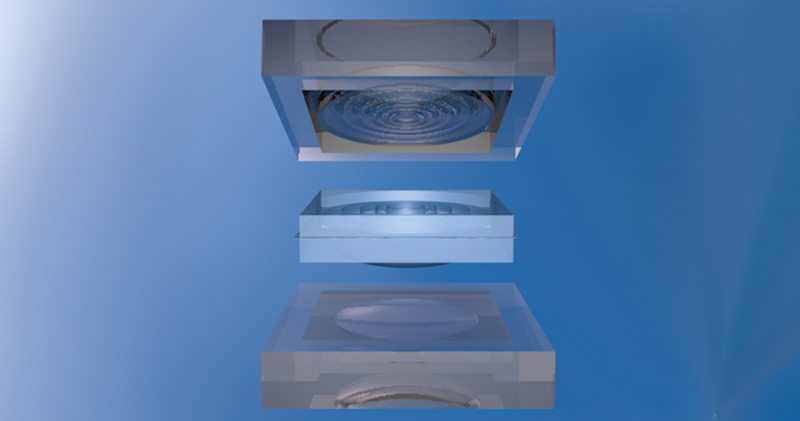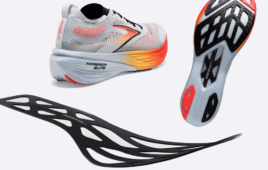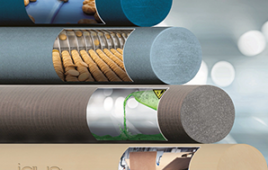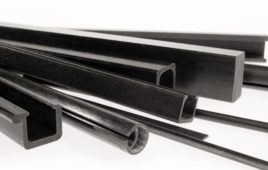
A fresnel lens made from adhesive (image: DELO)
Last month, we explained that adhesives have more benefits than simply bonding two components together. Now we will discuss one of those benefits: how transparent adhesives are used to enhance optical materials for lenses.
Today, micro-optics are found in a multitude of units, including LED flash modules, infrared sensors, ambient light sensors, proximity sensors, as well as primary and front cameras.
Developments of micro-optics on a wafer level began in the early 2000s, but were not used in the consumer market until 2007, when the first wafer-level camera was installed in a mobile phone.
Read more: What You Can Do with Crystal Clear Adhesives
The assembly process of these micro-optics follows the semiconductor paradigm: reduced pixel sizes and dimensions translate into lower cost per sensor, or camera.
A smaller sensor or laser requires smaller optics, resulting in more lenses on one optical wafer and a reduction of cost per lens. Thus, the wafer process allows the manufacturer to assemble a vast number of optical and optoelectronic elements on just one glass wafer.
High transparency in spite of light and heat
In order to make a UV-curing adhesive suitable for optical materials, they must fulfill a range of optical requirements under harsh environmental conditions.
For example, the complete optics must be able to withstand temperatures up to 260°C on the assembly line, in a humid environment while exposed to UV light. And, unlike other transparent plastics, they don’t melt.
Micro-optics are being used more than ever now because of their beneficial properties and because they improve the production process with the help of adhesives.
These adhesives have more to offer than optical clarity. They enable the production of high-power Fresnel lenses which cover a broad range in the refractive index.
Filed Under: Materials • advanced




